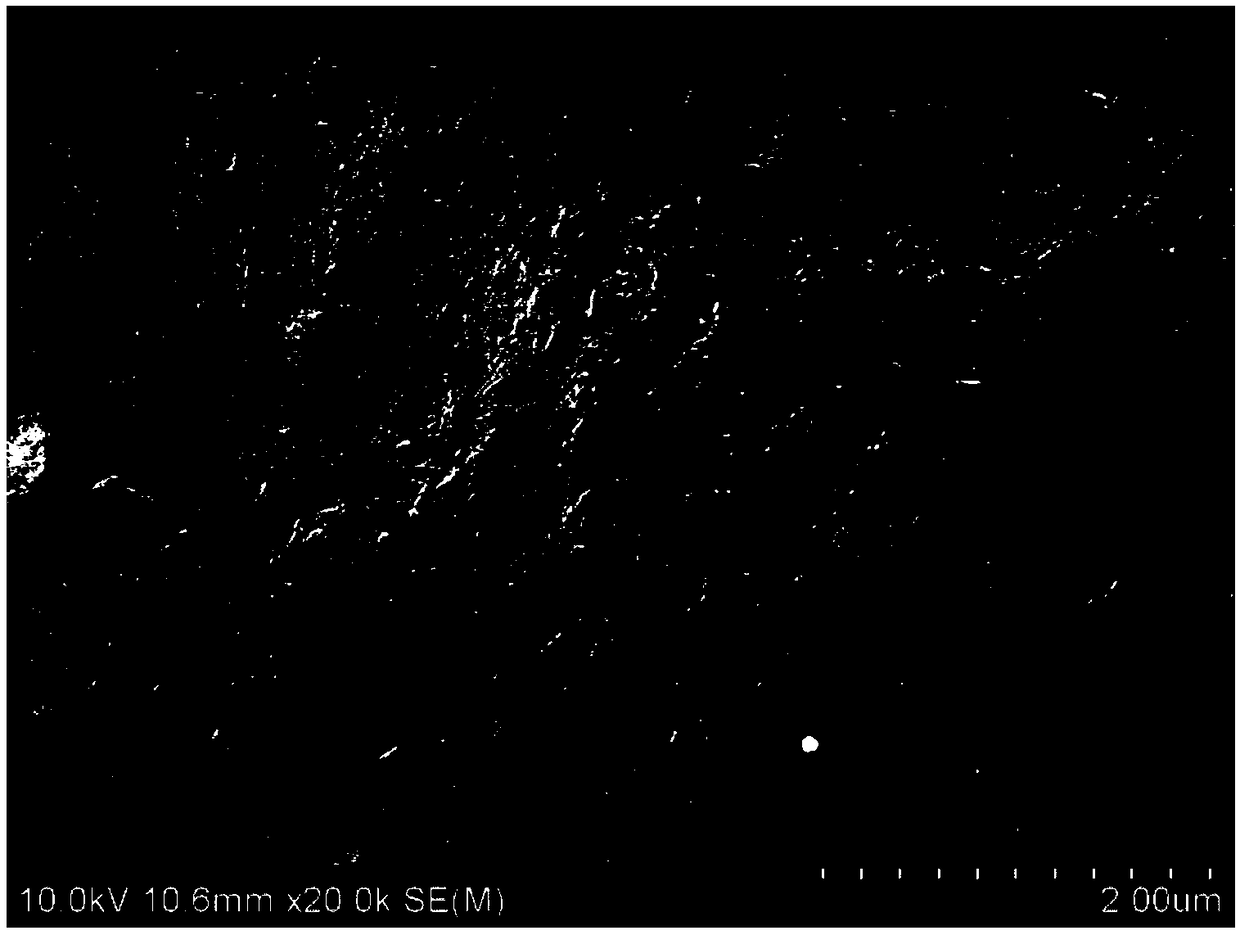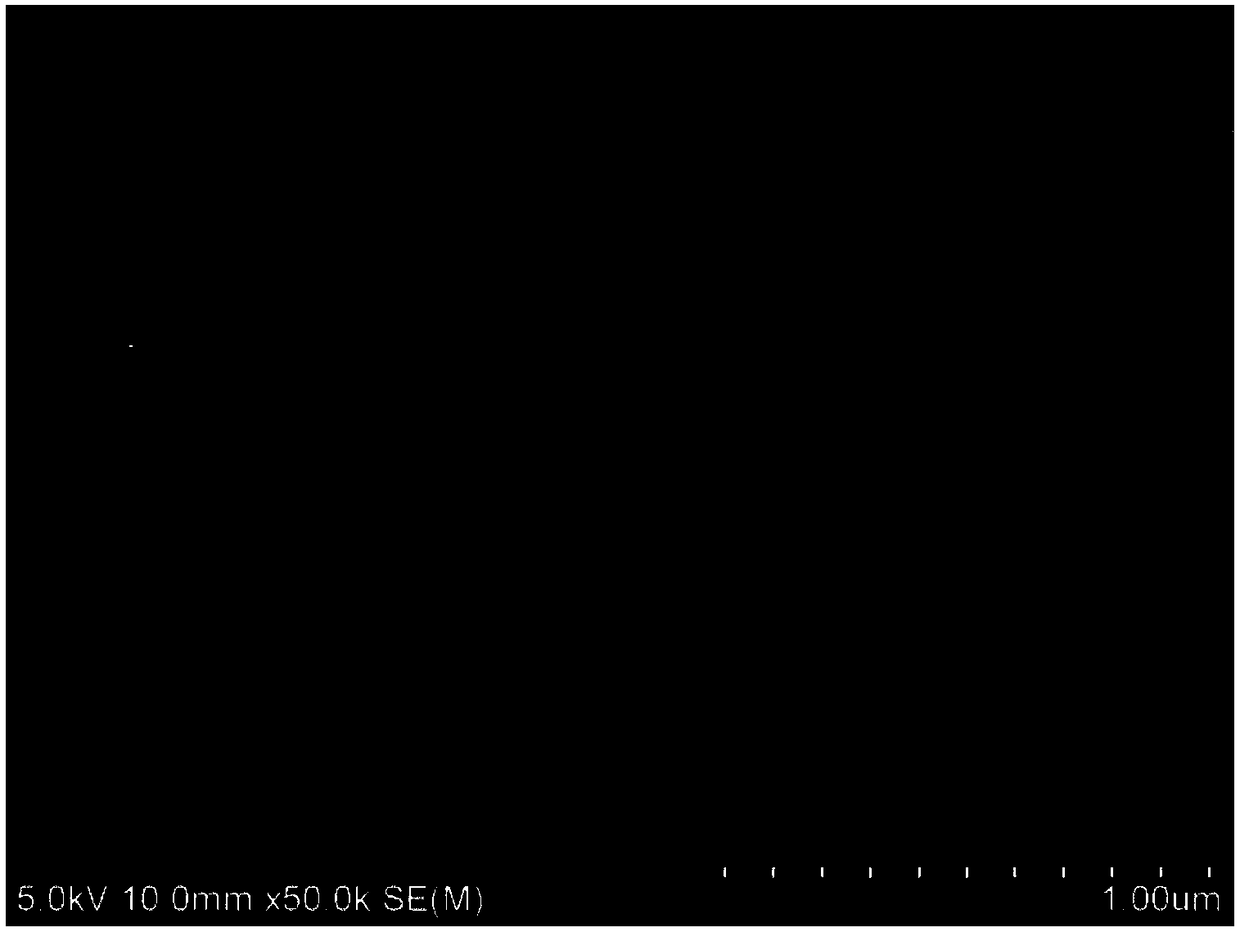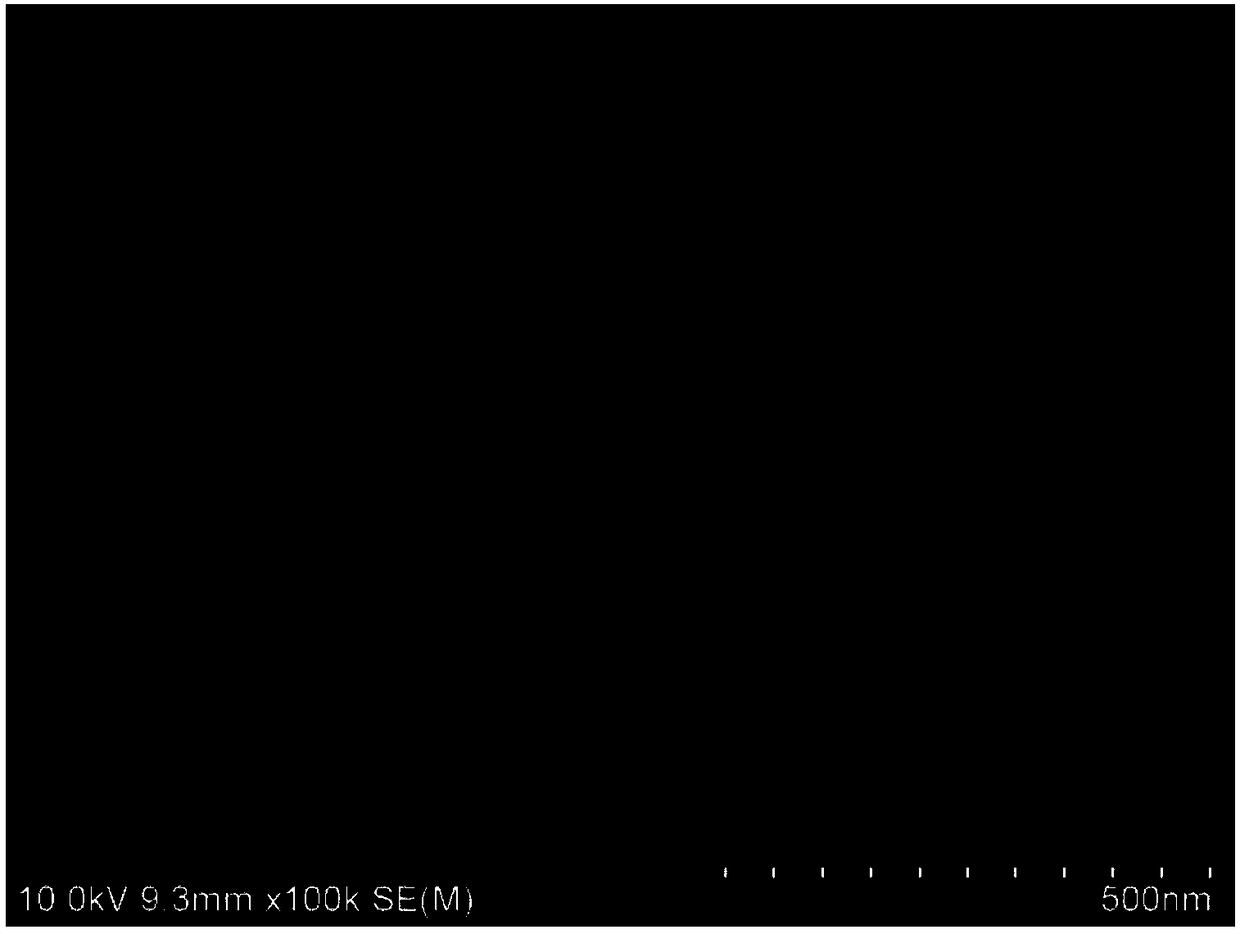Graphene-cellulose nanocrystalline composite heat-conducting film with bionic structure and preparation thereof
A heat-conducting film and graphene technology, which is applied in the field of graphene-cellulose nanocrystalline composite heat-conducting film and its preparation, can solve the problems of low heat conduction between surfaces and poor mechanical properties, and achieve the effect of improving heat conduction performance and increasing heat conduction channels
- Summary
- Abstract
- Description
- Claims
- Application Information
AI Technical Summary
Problems solved by technology
Method used
Image
Examples
Embodiment 1
[0028] Using expanded graphite as raw material, the GO aqueous dispersion was prepared by the improved Hummers method; a certain quality of plant material was added to a 1:1 mixed solution of concentrated sulfuric acid and deionized water, heated and hydrolyzed at 65°C for 1.5h, and then added after the heating was stopped. Dilute with deionized water, let it stand overnight, remove the supernatant, centrifuge, dialyze, and sonicate to obtain a CNC solution. The obtained CNC solution and GO aqueous dispersion were mixed at a solute mass ratio of 1:1, diluted, stirred, coated, and dried. The obtained film was annealed and reduced at a high temperature of 1500° C. for 2 hours.
[0029] figure 1 It is a scanning electron microscope photograph of the graphene-cellulose nanocrystalline composite film obtained in Example 1 of the present invention before high-temperature reduction; as can be seen from the figure, CNC is evenly dispersed on the surface of GO, indicating that a good ...
Embodiment 2
[0036] Using expanded graphite as raw material, the GO aqueous dispersion was prepared by the improved Hummers method; a certain quality of plant material was added to a 1:1 mixed solution of concentrated sulfuric acid and deionized water, heated and hydrolyzed at 65°C for 1.5h, and then added after the heating was stopped. Dilute with deionized water, let it stand overnight, remove the supernatant, centrifuge, dialyze, and sonicate to obtain a CNC solution. The obtained CNC solution and GO aqueous dispersion were mixed at a solute mass ratio of 1:4, diluted, stirred, coated, and dried. The obtained film was annealed and reduced at a high temperature of 1500° C. for 2 hours.
Embodiment 3
[0038] Using expanded graphite as raw material, the GO aqueous dispersion was prepared by the improved Hummers method; a certain quality of plant material was added to a 1:1 mixed solution of concentrated sulfuric acid and deionized water, heated and hydrolyzed at 65°C for 1.5h, and then added after the heating was stopped. Dilute with deionized water, let it stand overnight, remove the supernatant, centrifuge, dialyze, and sonicate to obtain a CNC solution. The obtained CNC solution and GO aqueous dispersion were mixed at a solute mass ratio of 4:1, diluted, stirred, coated, and dried. The obtained film was annealed and reduced at a high temperature of 1500° C. for 2 hours.
PUM
 Login to View More
Login to View More Abstract
Description
Claims
Application Information
 Login to View More
Login to View More - R&D
- Intellectual Property
- Life Sciences
- Materials
- Tech Scout
- Unparalleled Data Quality
- Higher Quality Content
- 60% Fewer Hallucinations
Browse by: Latest US Patents, China's latest patents, Technical Efficacy Thesaurus, Application Domain, Technology Topic, Popular Technical Reports.
© 2025 PatSnap. All rights reserved.Legal|Privacy policy|Modern Slavery Act Transparency Statement|Sitemap|About US| Contact US: help@patsnap.com



